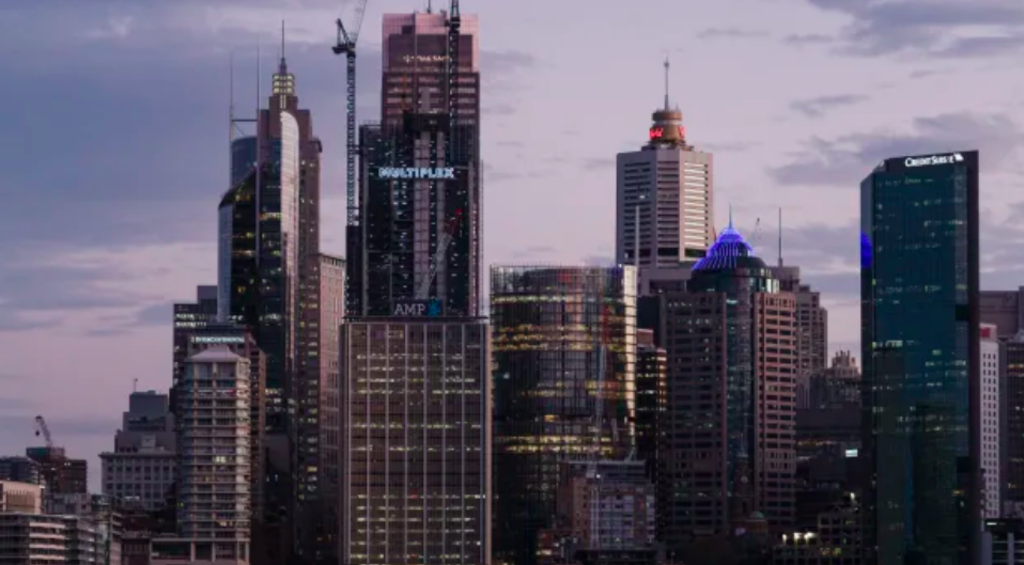Commercial property investors will be cautious until interest rates peak in 2023, experts say, with inflation and cost of living pressure weighing heavily on the economic outlook.
After a roller coaster year in 2022 in which the Reserve Bank lifted interest rates eight times, the commercial property market finished the year on a subdued note, with deals slowing and confidence waning.
Looking ahead, there is uncertainty about how high interest rates will go and for what duration. But Knight Frank chief economist Ben Burston believes we can expect a turning point in inflation.
“The turning point for inflation, currently expected in early 2023, will provide greater clarity on the interest rate outlook, and this is expected to restore confidence and liquidity by mid-2023,” he wrote in a Knight Frank report.
Ray White Commercial’s head of research Vanessa Rader said sales volumes were expected to remain subdued throughout 2023 given the increased cost of finance.
“While many buyer types will retreat, savvy investors will capitalise on increased yields or even vacant assets, albeit at the right price,” Rader said.
Offices
Office vacancy rates did not rebound as much as property pundits hoped in 2022 in Sydney and Melbourne, with both markets still struggling to bring staff back into the office full-time.
Rader said this would continue to “dampen absorption levels and keep vacancies elevated over the short-term as well as hindering rental increases or incentive reduction”.
But this was not the case across the board. “Confidence in office markets in growth zones such as Sunshine Coast, Gold Coast and Perth, which have benefited from population gains, are likely to remain high keeping occupancy rates up and future prospects sound.”
The Property Council’s chief executive Ken Morrison said recent data had shown an uptake in office space in Melbourne – the least occupied CBD since the pandemic, while Perth achieves 80 per cent occupancy.
“After the holiday season, you would expect that to continue to build as the COVID situation normalises, and people settle on a hybrid working approach,” he said.
Hotels and accommodation
Although travellers can holiday overseas, health and economic concerns are likely to work in the domestic hotel sector’s favour in 2023.
Radar is tipping occupancy levels will further improve this year and and average daily room rates will lift to never before seen highs.
“This will put the spotlight back on hotel assets as an attractive investment choice, from major CBD holdings of interest to foreign buyers through to smaller coastal motels catering for the whole family (pets included) for the smaller private buyer,” she said.
Morrison said the sector had rebounded strongly, with a “tremendous amount of investment into hotel and tourism assets including CBD assets”.
Student accommodation had also bounced back strongly over 2022, he added, surprising most property experts.
“International arrivals have returned strongly, albeit not out of China,” he said. “And we’ve also got strong support from domestic students.”
“The student accommodation premises in most of our cities are full. Hopefully, we can welcome in new investment into that sector.”
Life sciences and healthcare
With an ever growing investment pool looking at non-traditional asset classes, the life sciences and healthcare sector is expected to continue to grow rapidly in 2023.
“The Australian life sciences sector continues to mature steadily against a backdrop of an ageing population, personalised treatments, technological advancements, future food transitions, and other agri-tech and marine technologies,” Burston said.
The number of organisations identified as part of the sector has jumped 43 per cent since 2019.
From clinical research facilities to purpose-built healthcare infrastructure, investors are looking to scale up their involvement.
Retail and industrial
In recent years, retail assets have suffered due to the structural shift to online shopping, while industrial assets have outperformed for the same reason.
The subsequent shift in pricing has seen industrial yields drop far lower than retail yields. However, Burston said this dynamic would change as “retail [was] likely to be less exposed to outward yield shift given a much higher starting point.”
Additionally, the lease structure of retail assets is often more amenable to translate higher inflation into income growth, he said.
“Both of these forces will act to narrow the wide divergence between the sectors,” he said, adding that fewer investors are likely to pursue a sector-specific strategy to the exclusion of retail.
Rader said the retail asset class continued to transform in line with shopping habits, and shopping centres might rely on other sectors in 2023. “Food will continue to be an attractor, however uses like childcare and co-working office space may take up some larger holes if and when vacations occur.”
Experts predict the underlying fundamentals of the industrial sector will remain – with huge demand for logistics spaces continuing to put upward pressure on prices.
Rising rents will create uncertainty for small businesses, Rader predicted, prompting many to actively seek out assets to buy to “shelter from possible increases in rents”.
Burston said the market would welcome a record year for development completions in 2023, led by Brisbane and Melbourne. “But this is still likely to be insufficient to restore a more normal balance between supply and demand,” he said.
